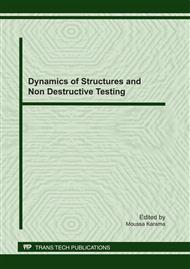p.11
p.21
p.31
p.39
p.49
p.57
p.67
p.79
p.89
Physical and Mechanical Properties of the Reinforced Polyester: Characterization - Probabilistic Analysis
Abstract:
The specific properties of material, such as resistance, the cost and the weight, become key factors in the decision making and the choice of vulgarization of material in its industrial and technological aspect. The choice of a resinous system used like stamps in the design of composites, depends on the mechanical performances and the cost of the resin. Currently the prohibitory cost of composite materials slows down the rise of their applications in certain technical fields. In this study, the physical and the mechanical characterization is presented, bearing on the resin of the type RESOW 55 E reinforced out of powders of different nature at different rate. The results of the mechanical tests carried out, show clearly, that the fracture is strongly influenced by the type and the rate of powder added in the matrix. In reinforcement, according to the results obtained with x-rays, one notes that there are no new chemical compounds formed in elaborate materials. The presence of powder does not modify the structure of polymer and that is confirmed by the x-rays analysis and spectrometric analysis. Based on experimental results, a model of Weibull strength distribution function has been established for each specimen. Finally, a confrontation of the theoretical and experimental results is carried out, based on probabilistic models.
Info:
Periodical:
Pages:
67-78
Citation:
Online since:
June 2011
Authors:
Keywords:
Price:
Сopyright:
© 2011 Trans Tech Publications Ltd. All Rights Reserved
Share:
Citation:


